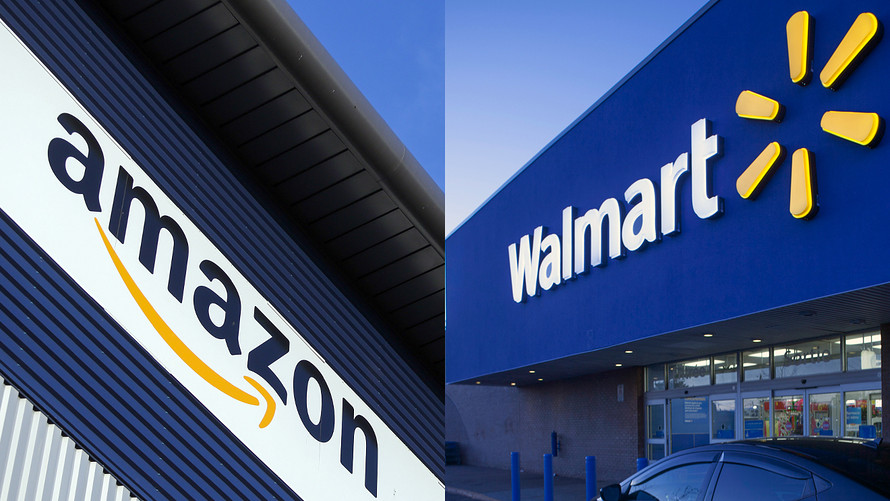
Shoppers who live paycheck-to-paycheck flock to Walmart on payday
People who live paycheck to paycheck aren’t like other consumers — and where they take their wallet demonstrates this.
A new report from Earnin, an app that provides users advances on their paychecks for a fee, examined their users’ behaviors when they shopped at Walmart and Amazon. Roughly twice as many people shopped at Walmart WMT, +0.66% in a given month than on Amazon AMZN, +3.77% Both stores see spikes in the value of transactions in February and March when people typically get their tax refunds and in November and December during the holiday shopping season.
Walmart tended to be more popular than Amazon with lower-income Americans when they get paid. “Americans living paycheck to paycheck may have different considerations when choosing where to shop,” the report noted. (Amazon declined to comment on the Earnin report, and Walmart did not respond to a request for comment.)
Lower income shoppers spend an average of $44.39 in Walmart per shopping trip versus $25.31 at Amazon.
Because shopping at a brick-and-mortar retailer like Walmart takes more time and effort (and gas) than sitting at home on a computer, there’s an inclination to do as much shopping as possible in one trip. Shoppers spend an average of $44.39 in Walmart per shopping trip versus $25.31 at Amazon. “With Amazon purchases, and particularly for Prime members, the costs of ‘going back’ are much lower, which doesn’t incentivize bundling,” the report noted.
Lower-income consumers who shopped at Walmart also tended to do so at the beginning or end of the month, whereas those who bought items from Amazon did so throughout the month. This, the report concluded, was a reflection of Walmart’s role as a place to shop for necessities on a budget.
Amazon and Walmart still have different customer bases
Another reason people like shopping at Walmart over Amazon: people get more pleasure from rifling through bargain bins and enjoy the experience of perhaps finding the last discounted product, studies show. “Big box department stores make you dig around and see what’s on sale,” Brent Shelton, a shopping expert and public relations executive, told MarketWatch. “People feel like they’re on a treasure hunt and finding a bargain that someone else missed.” (Some stores also use music to keep people moving briskly through the store or to slow them down, depending on how busy stores are.)
In recent years, Amazon has taken steps seemingly in an effort to encroach on Walmart’s territory. Its acquisition of Whole Foods was a step into the grocery sector. Last year, Amazon rolled out a lower-priced Prime membership targeting lower-income Americans. To qualify, Amazon customers must have a valid Electronic Benefits Transfer (EBT) card, which looks like a debit card and is used by those receiving SNAP benefits, also known as food stamps.
Big box department stores make you dig around and see what’s on sale, something many shoppers enjoy.
In April 2017, Amazon announced a program called Amazon Cash that allows people to add money to their Amazon account if they don’t own a debit or credit card. Approximately 7% of households in the U.S. do not use bank accounts at institutions backed by the Federal Deposit Insurance Corporation, and this program would allow them to still shop online through Amazon.
The average Amazon shopper is still quite different from the typical person strolling through the aisles of her local Walmart. On average, Amazon shoppers have a household income of $62,900, Barron’s reported based on a research report from financial-service firm Cowen, citing 2015 data. That’s 12% more than the average person who shops at Walmart.
Prime subscribers, who pay $119 per year to receive additional benefits like free shipping, are even wealthier, with an average household income of $69,300. And the median age of a Prime subscriber — 36.5 years old — is much younger than the median age of people who frequent Walmart (42).
But these factors could be changing as Amazon expands its reach. The online retailer is expected to become the top seller of apparel in the U.S. in 2018, according to a research note from Wells Fargo WFC, +1.35% In doing so, it will leapfrog its biggest rival Walmart.


